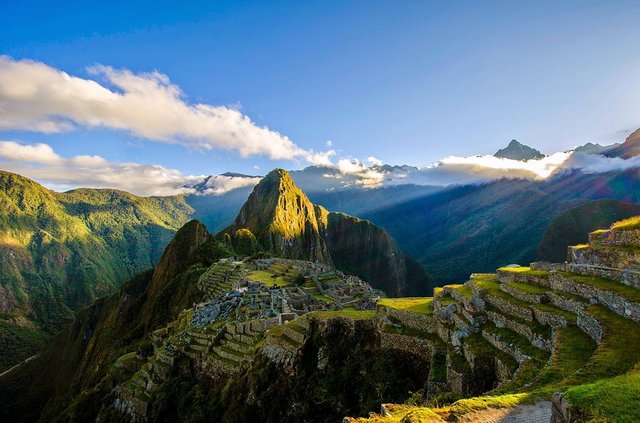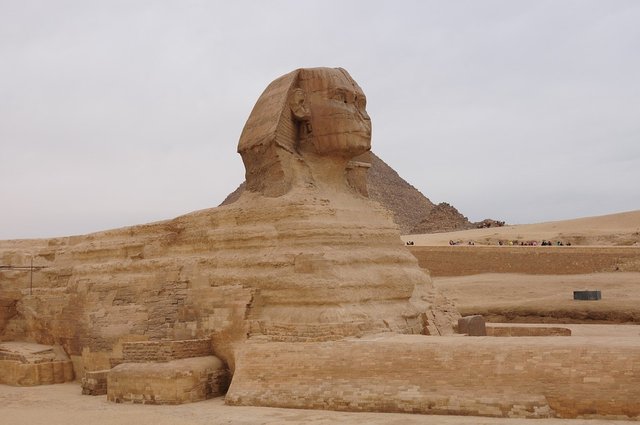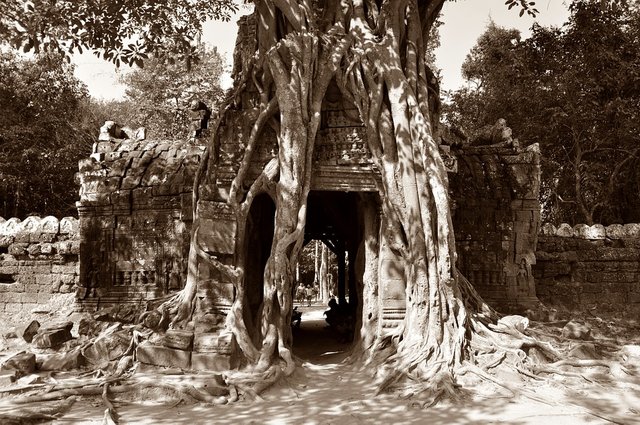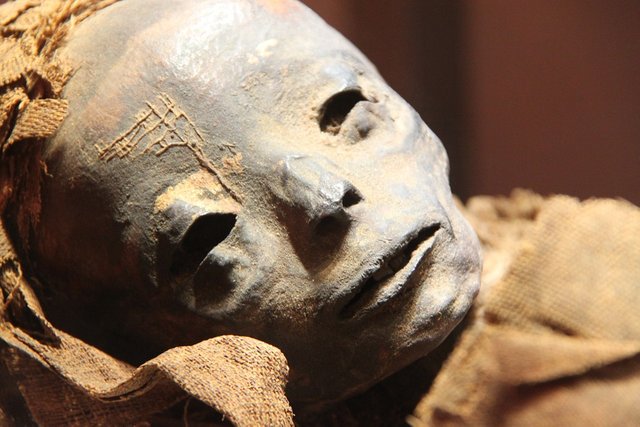The Preservation of an Archaeological Site : Part 1
The Preservation of an Archaeological Site : Part 1
An anthropologist studying the material culture of present day peoples would find that a large variety of material, both organic and inorganic, is being used extensively in the manufacture of material objects. The prehistorian is seldom fortunate enough to obtain so complete an insight into a specific material culture, because many of the material cultural objects are prone to always being incomplete and the various formation processes that shape the archaeological record have to be taken into account when reconstructing the history of a site.
The archaeological Record
The archaeological record minimally include the record of culture history and everything written about past by archaeologists.

The archaeological data available for research is the result of two transformational processes, namely human or cultural behaviour and natural or non-cultural developments. The first stage in the formation of the archaeological record springs from the activities of humans occupying a site. After a site has been abandoned, natural processes, as well as the possible re-occupation of the site, may cause various changes in the formation of the archaeological record.
Site Formation Processes

Cultural Transformations
The preservation of archaeological sites and artefacts is influenced by two processes, namely cultural formation processes (c-transforms) and natural formation processes (n-transforms). C-transforms refer to the way in which human behaviour affects the archaeological record, for example refuse disposal patterns, the recycling or reuse of sites and artefacts, the preservation of heirlooms, as well as the deliberate or accidental destruction of archaeological sites by agricultural development, industrial expansion or the activities of treasure hunters.
Site formation : Cultural vs Natural Transformation
Many processes lead to the creation of archaeological sites. Collectively, these are known as site formation processes. When the focus is on the initial deposition of material remains, the processes are sometimes called cultural transformation processes. Archaeological sites invariably have sediments in them that are brought in by nature, and the processes responsible for this are generally called natural or non-cultural formation processes.
Cultural Formation Process Natural Formation Process
- Deliberate discard - Natural Soil Formation
- Intentionally burying - By water
- Loss of objects - Through the air, wind
- Site abandonment - By animals
A distinction is sometimes drawn between the influence of human behaviour before and after the burial (or coverage) of a site or tool. The former comprises the acquistion of raw material, as well as the manufacture, use, and eventual disposal of a tool when it is worn out. The latter includes activities such as ploughing, looting, the reclamation of erstwhile sites or artefacts, the tearing down of buildings erected by former occupants or the disturbance of sites, for example through the digging up of dung deposits in Iron Age cattle enclosures to obtain fertiliser.
Natural Transformations
Natural formation processes, namely the processes by which nature affects what survives in the archaeological record, include a wide range of environmental conditions and events which affect the preservation of artefacts from the time they are discarded until the time they are excavated. According to Hall (1996:58), the archaeologists, William Rathje and Michael Schiffer, argue that these environmental processes have four basic characteristics, namely nature, duration, effects and scale.

~The nature of the environmental processes is revealed in the chemical, biological and physical agents or forces that act upon the archaeological remains. The chemical composition of a deposit can facilitate or prevent preservation, bone, for example, is well preserved in chalk deposits, whereas acidic soil is detrimental to the preservation of bone and wood. Biological agents such as bacteria and fungi can break down organic materials, and termites and scavengers can seriously damage deposits or finds. Physical agents include the destructive powers of water, wind and sunlight, as a result of which artefacts can be displaced, eroded or abraded.
~Duration refers to the length of time during which a site or an artefact is exposed to the ravages of nature. The degree of preservation is usually proportionate to the age of a site, but single events such as floods or volcanic eruptions may also have a major impact. A volcanic eruption may destroy a settlement but at the same time preserve an archaeological site such as Pompeii. Another example of the impact of natural disasters is the mudslide that engulfed Ozette, an Indian site on America's Northwest Coast, in 1750, thereby preserving numerous cedarwood long houses.
~Effects can be additive when environmental materials are introduced into the archaeological deposits or subtractive when artefacts disappear from the deposit as result of removal,decay or some other means.
~ Scale refers to the overall impact of the environmental processes, namely whether whole regions or single sites or artefacts are affected.

Preservation and Human activity

(a) Patterns of artefact discard
Human activities have a great influence on the preservation of archaeological material. This is borne out, for example, by patterns of artefact discard. Such patterning may distort the archaeological record and the archaeologist must bear this in mind.
(b) Burials
Simple graves, cemeteries, burial mounds or pyramids may all contain grave goods that are major sources of archaeological data. Painted tomb chamber walls are also excellent sources of information with which to reconstruct a culture.
(c) Recycling of sites and artefacts.
The reuse of a site may result in the destruction of the material culture of the previous occupants.
(d) Heirlooms and Ceremonial objects
The preservation of heirlooms and ceremonial objects and the deliberate storing of prized possessions (hoards) in prehistoric and historical times may contribute to the richness of the archaeological record. For example, hoards consisting of metal goods and objects of precious metal were commonly buried during the European Bronze Age and often not retrieved by their owners.
(e) Deliberate and Accidental Destruction
Deliberate and accidental destruction is caused by burials being dug into earlier deposits. At the ascent of a new ruler, monuments or inscriptions relating to the predecessor would sometimes be deliberately destroyed or reworked. Human destruction of the archaeological record through development or looting of antiquities constitute a major threat to the archaeological heritage of all countries. However, the impact of human activities on the preservation of archaeological material comprises much more. One could also refer to deliberate and accidental destruction, for example the activities of treasure hunters, or to the consequences of modern agricultural or industrial development. The latter has led, inter alia, to the development of a new branch of archaeology, namely salvage archaeology, which is mainly concerned with the recording and excavation of sites that are in danger of being destroyed by industrial or other projects.
References: Hall (1996:58)
The Preservation of an Archaeological Site : Part 2 - Final .... To follow.
Please Follow me for more on Archaeology and History.
Please check out my other posts:
Discovering your own Archaeological Site : Part 3
Discovering your own Archaeological Site : Part 2
Discovering your own Archaeological Site : Part 1
Archaeological Sealed Sites and River Deposits : Is it an Archaeological Site or Not? - Part 3
Caves, Rock Shelters and Larger Open-Air Sites : Is it an Archaeological Site or Not? - Part 2
Is it an Archaeological Site or Not? - Part 1
Understanding the Archaeological Record : The Aims and Subject Matter of Archaeology - Part 2
The Aims and Subject Matter of Archaeology - Part 1
Archaeology and the Natural Sciences
Introduction to Ethnographic Analogy and Ethnoarchaeology
The Nature and Scope of Archaeology
The Three - Age System : The Stone Age, The Bronze Age and The Iron Age
The Roots of Modern Archaeology
Significant 18th and 19th Centuries Discoveries in Archaeology
Archaeology as a Profession- Part 2
Archaeology as a Profession- Part 1
To Become or Not Become an Archaeologist? - Introduction to Archaeology Part 2
Please Upvote and Resteem.
Thank You!
"The chemical composition of a deposit can facilitate or prevent preservation, bone, for example, is well preserved in chalk deposits, whereas acidic soil is detrimental to the preservation of bone and wood. "
Although that makes a lot of sense, I hadn't ever considered that!
Well done, bud!
Hi @battlr. Thank you so much!
Congratulations @zest! You have completed some achievement on Steemit and have been rewarded with new badge(s) :
Click on any badge to view your own Board of Honor on SteemitBoard.
For more information about SteemitBoard, click here
If you no longer want to receive notifications, reply to this comment with the word
STOP